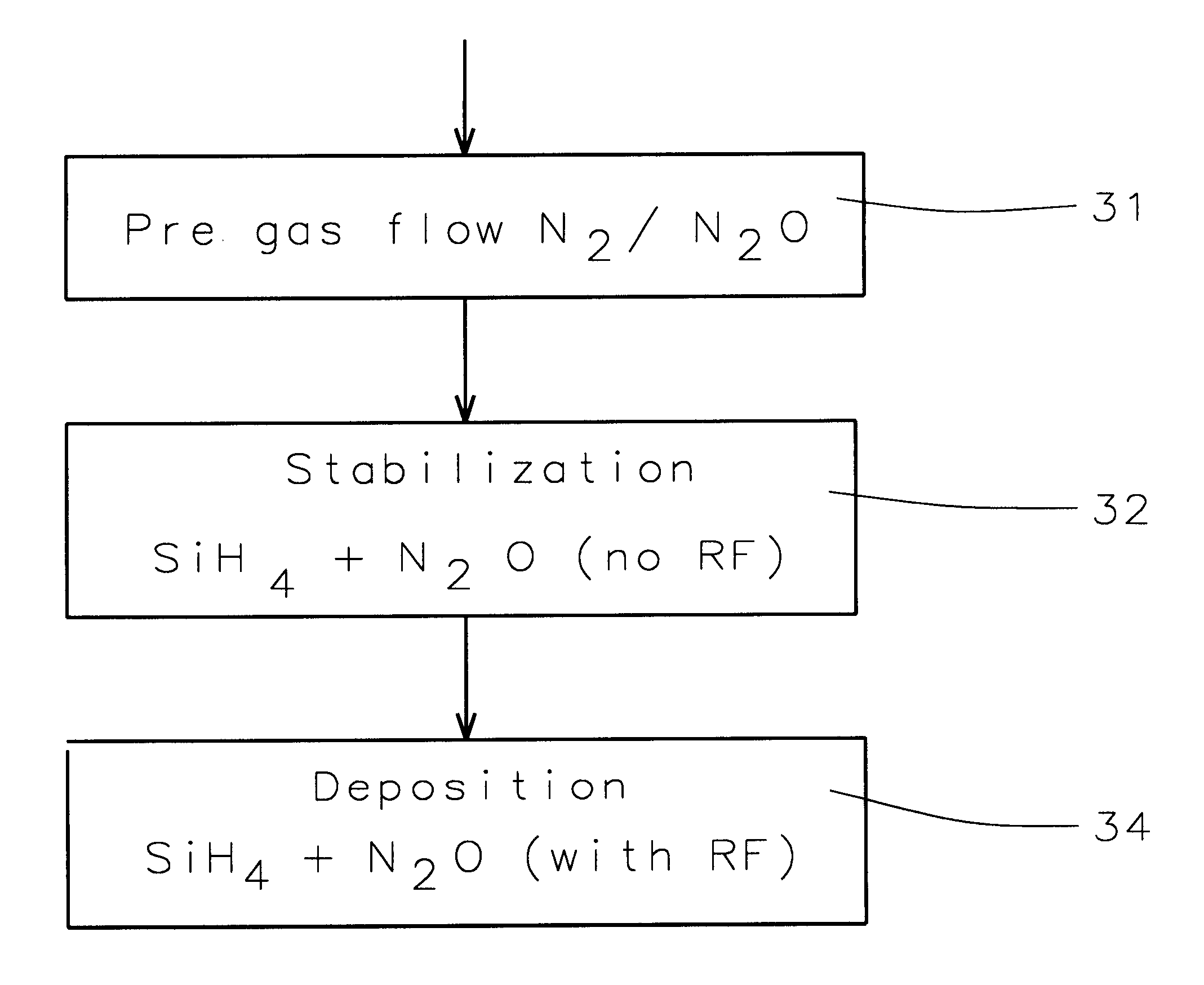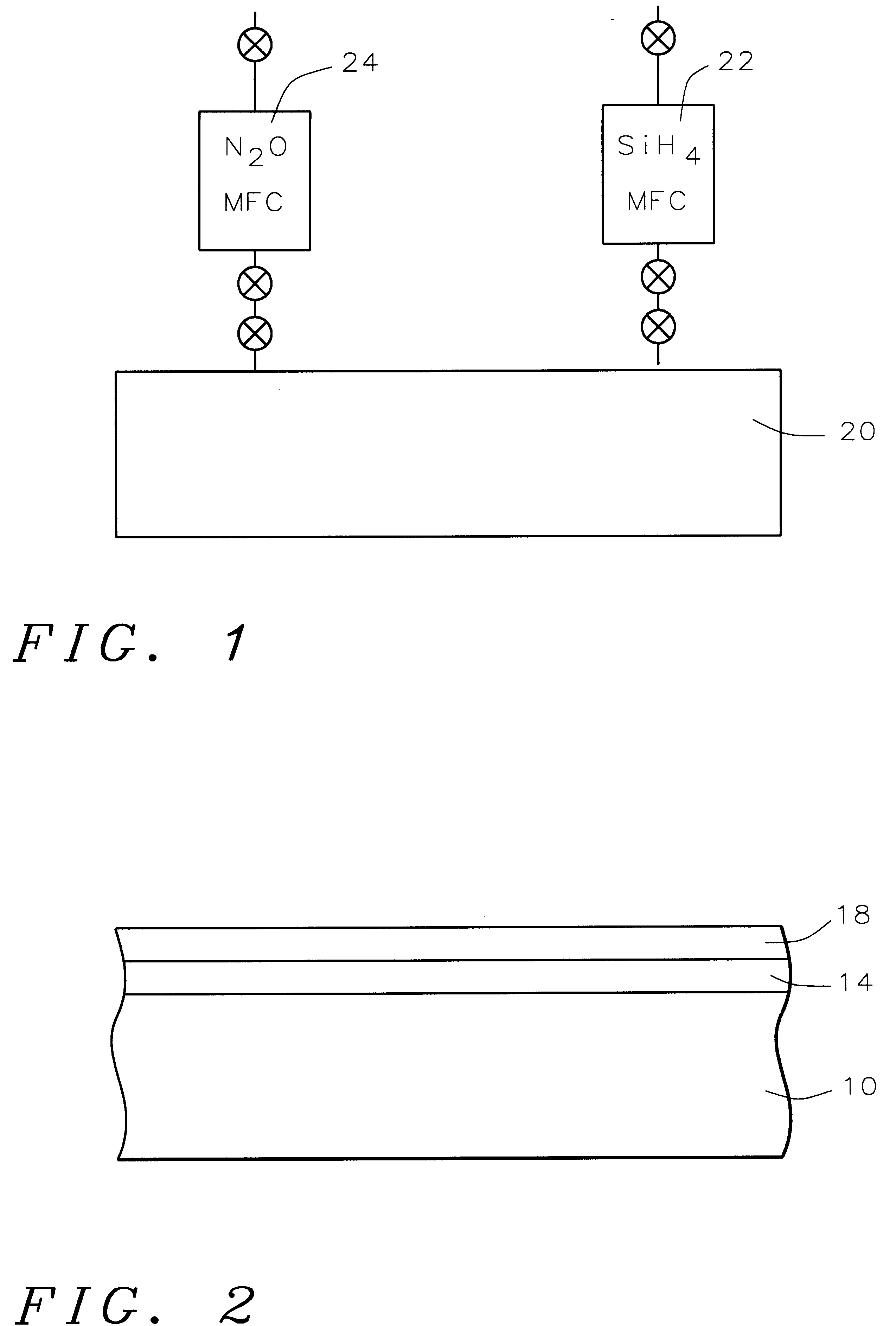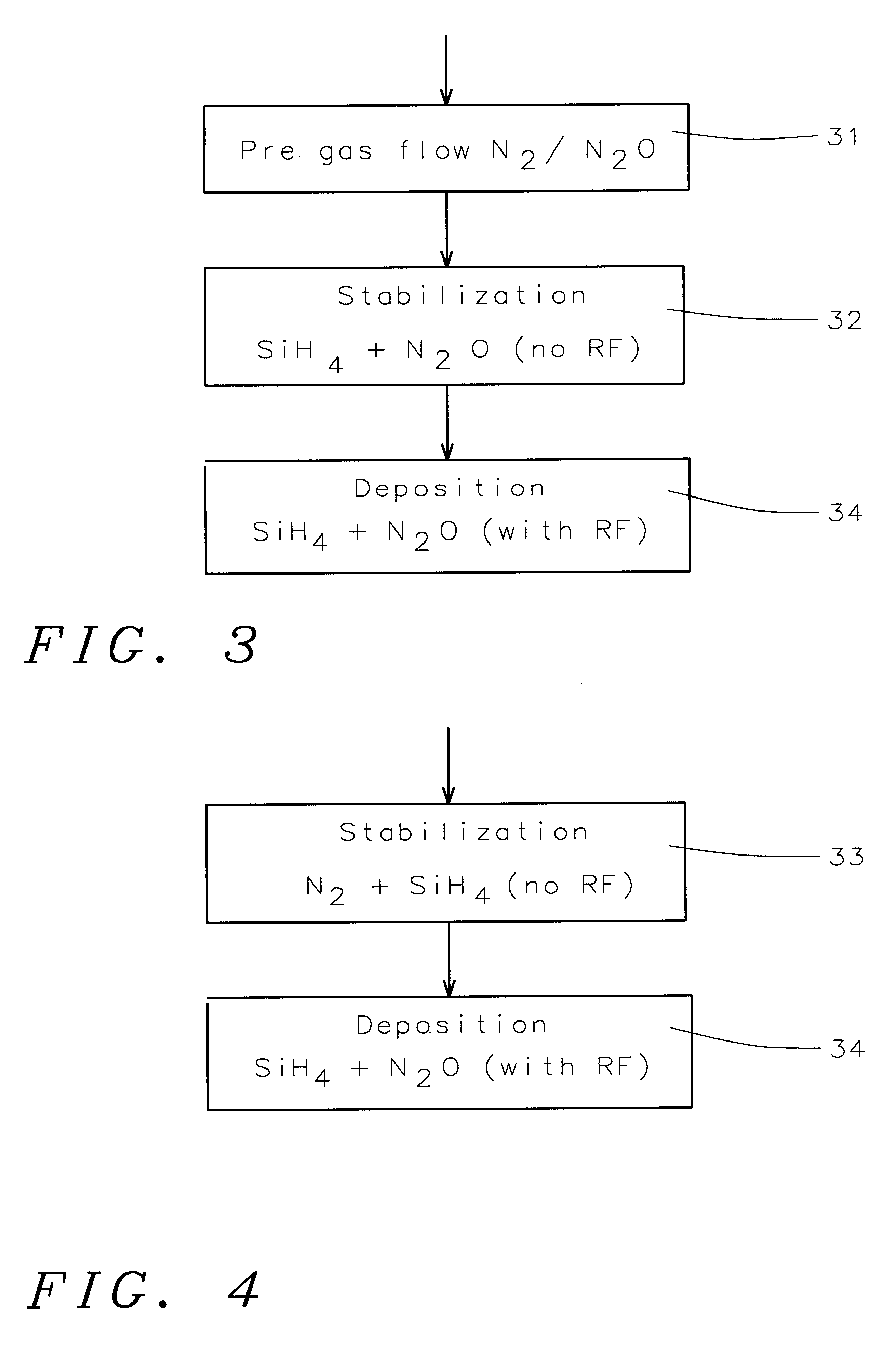PE-silane oxide particle performance improvement
a technology of silane oxide and performance improvement, applied in the field of pesilane oxide particle performance improvement, can solve problems such as particle spiking disaster
- Summary
- Abstract
- Description
- Claims
- Application Information
AI Technical Summary
Benefits of technology
Problems solved by technology
Method used
Image
Examples
second embodiment
The last table entry (7) refers to the present invention. This is a new stabilization step including N.sub.2 and SiH.sub.4 flow before the N.sub.2 O and SiH.sub.4 deposition step. The particle counts were also satisfactory for this case.
FIG. 4 illustrates the process flow of the second preferred embodiment of the present invention. Step 34 is the conventional deposition step. Step 33 is the new stabilization step of the present invention. N.sub.2 and SiH.sub.4 gases are flowed together in the new stabilization step.
first embodiment
The process of the present invention provides a method of PE-silane oxide deposition with dramatically reduced particle counts. The inventive process in the first embodiment is a pre-flow step inserted before the N.sub.2 O+SiH.sub.4 stabilization step. N.sub.2 O gas or N.sub.2 gas, or a combination of the two, is flowed, preferably for at least 2 seconds. The flow rate of the gases is preferred to be the same as the flow rate of the N.sub.2 O gas in the deposition step.
In an alternative according to the second embodiment, a new stabilization step is inserted in place of the N.sub.2 O+SiH.sub.4 stabilization step. The new step flows N.sub.2 gas and SiH.sub.4 gas using no radio frequency followed by conventional deposition Particle performance was found to be good when this new stabilization step was substituted for the conventional stabilization step. It is surmised that the N2 and SiH4 gases together changed the nucleation conditions.
Both embodiments of the present invention are sim...
PUM
| Property | Measurement | Unit |
|---|---|---|
| size | aaaaa | aaaaa |
| radio frequency | aaaaa | aaaaa |
| purity | aaaaa | aaaaa |
Abstract
Description
Claims
Application Information
 Login to View More
Login to View More - R&D
- Intellectual Property
- Life Sciences
- Materials
- Tech Scout
- Unparalleled Data Quality
- Higher Quality Content
- 60% Fewer Hallucinations
Browse by: Latest US Patents, China's latest patents, Technical Efficacy Thesaurus, Application Domain, Technology Topic, Popular Technical Reports.
© 2025 PatSnap. All rights reserved.Legal|Privacy policy|Modern Slavery Act Transparency Statement|Sitemap|About US| Contact US: help@patsnap.com



